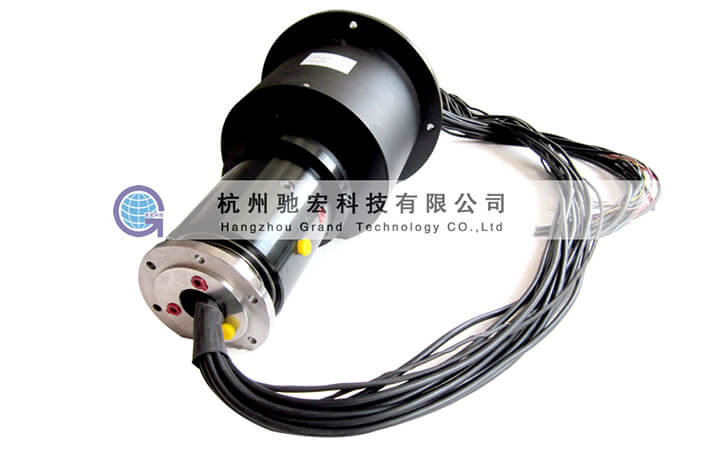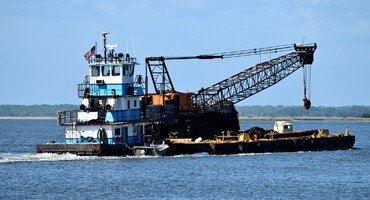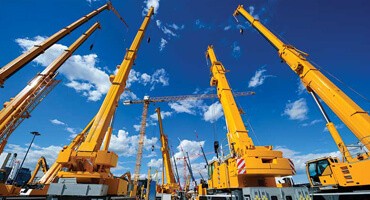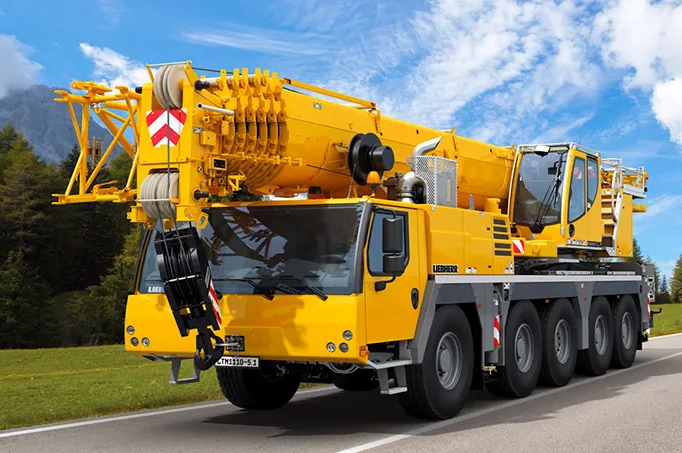Introduction
Water rotary unions are indispensable components in various industrial sectors, ensuring a reliable and steady flow of water or other fluids between stationary and rotating components. Their ability to maintain this connection, even under rotation, makes them key to the seamless function of rotating machinery and systems—be it in manufacturing units, energy production facilities, marine applications, or construction.
Understanding the different types of water rotary unions, their unique features, and specific applications can help optimize processes and enhance operational efficiency. Further, insights into their performance characteristics can guide users to select the most suitable type based on their process demands, thus ensuring sustainable, cost-effective, and reliable operations.
This comprehensive guide will delve into the world of water rotary unions, covering the types available, their diverse applications, performance attributes, key features, ways to install and maintain them, and troubleshooting advice. Towards the end, we will discuss the factors to consider while selecting a water rotary union and answer frequently asked questions to provide a clearer understanding and dispel common apprehensions. Our goal is to arm you with a solid knowledge base, enabling informed decision-making when it comes to water rotary unions.
What is a Water Rotary Union?
A water rotary union is a specialized type of rotary union that is designed to provide a seal between stationary and rotating components, allowing for the flow of water or other fluids. In essence, it serves as a connection between a stationary supply passage, such as a pipe or tubing, and a rotating part, like a drum, cylinder, or spindle. This connection enables the fluid to flow into and/or out of the rotating part seamlessly, without causing leakage or contamination.
Water rotary unions can transfer various fluid media, but they are particularly engineered for water transfer applications. They may also support multiple independent flow channels or passages for sealing and transferring different types of fluid media simultaneously. Examples of common media types include chemicals, coolants, food products, gases, oils, and steam, among others. The design and construction of water rotary unions cater to the unique specifications and requirements of water or other compatible media, ensuring reliable sealing and fluid transfer in diverse industrial applications.
Types of Water Rotary Unions
There are several types of water rotary unions available in the market, each tailored to suit specific applications and meet the demands of various industries. The key differences lie in the number of flow channels, design variations, and integrated functionalities. Here’s a detailed look at the four distinct types of water rotary unions:
Single-Flow Rotary Unions
Single-flow rotary unions consist of a single fluid passage. They are the simplest and most common type, designed to handle straightforward fluid transfer applications that require the movement of water or another fluid type between stationary and rotating components. Single-flow rotary unions are employed in diverse applications, including cooling, heating, lubrication, and hydraulic fluid transfer.
Dual-Flow Rotary Unions
Dual-flow rotary unions incorporate two separate fluid passages. They allow two distinct liquids to flow simultaneously through different channels within the union, effectively isolating the streams and preventing cross-contamination. This design is ideal for applications that necessitate the transfer of multiple fluids at once, such as when supplying both coolant and cutting fluid to a machine tool during operation.
Multi-Channel Rotary Unions
Multi-channel rotary unions are designed for more complex applications, extending the concept of dual-flow unions to a larger scale. These unions can hold multiple fluid passages simultaneously, enabling the concurrent transfer of various fluid types or a combination of fluids and gases. Multi-channel rotary unions are particularly useful in applications with multiple independently controlled flow channels, improving productivity and efficiency.
Combined Rotary Unions
Combined rotary unions integrate electrical slip rings, which provide electrical connections alongside fluid connections, all contained within a single, compact unit. This design delivers a more efficient and streamlined solution for applications that require simultaneous transfer of fluids and electrical signals, such as in wind turbines or robotic systems. By combining the capabilities of rotary unions and slip rings, this type of water rotary union simplifies assembly and saves valuable space, making it more suitable for applications with limited installation areas.
Water Rotary Unions: Applications
Water rotary unions have incredibly diverse applications across various industries. Each application is linked by a common need – managing the flow of water or other fluids in systems with rotation. Let’s delve into four main applications across different sectors:
Manufacturing
Water rotary unions play a key role in the cooling and lubrication of machine tools. These devices are an essential part of high-speed spindles, hydraulic and pneumatic cylinders, and other machines requiring a constant fluid supply during rotation. Their presence provides a necessary cooling mechanism for machines to perform at an optimal level. In addition, they’re extensively used in printing and packaging equipment, textile machinery, and paper-processing machines, where water or other fluids need to be continuously supplied or removed during operation.
Energy Production

In the renewable energy sector, water rotary unions are crucially employed in wind turbines, solar power systems, and hydroelectric power stations. For instance, in wind turbines, these rotary unions facilitate efficient fluid transfer for cooling generators or transferring hydraulic fluid. Similarly, concentrated solar power systems, are used in the rotation of solar panels following the sun’s trajectory, ensuring a continuous flow of heat transfer fluids.
Marine and Offshore

In marine applications, water rotary unions serve vital roles in managing water and other fluids in shipbuilding, underwater equipment maintenance, and oceanographic research. They cater to the demanding working conditions of the marine environment, including the need to withstand high pressures and corrosive seawater. For instance, water rotary unions are used in ROVs (Remotely Operated Vehicles) to facilitate the flow of hydraulic fluid while maintaining watertight integrity.
Construction

Construction industries leverage the capabilities of water rotary unions in a couple of applications. These include the mixing drum of a cement mixer, where a water rotary union allows a steady stream of water into the rotating drum, and hydraulic excavators, where they help in the flow of hydraulic fluids to control the arms of the excavator. This enhances the machine’s efficiency and productivity.
By recognizing the wide array of applications, it becomes evident how integral water rotary unions are in sustaining industrial processes and enhancing productivity across sectors.
Water Rotary Unions: Performance
When discussing the performance of water rotary unions, several key factors come into play that contribute to their efficiency and functionality. Here are the four main performance-related aspects you should consider:
Flow Rate
One of the primary performance indicators of water rotary unions is the flow rate, which refers to the volume of water or fluid that the union can transfer per unit of time. This is determined by the size and design of the rotary union. High-flow-rate units are needed in situations where large quantities of fluid must be transferred quickly, such as cooling large machines in manufacturing.
Pressure Rating
The pressure rating specifies the maximum pressure that the water rotary union can tolerate without risk of failure. Rotary unions designed for high-pressure applications are typically more robust and offer reinforced sealing mechanisms to prevent leaks and withstand high fluid pressure.
Temperature Handling
Rotary unions must be able to withstand the temperatures of the fluids they carry. Some applications involve hot fluids or operate in high-temperature environments. In such cases, rotary unions must be constructed from materials that can handle these temperatures without corroding or deteriorating.
Rotational Speed
The rotational speed refers to the maximum speed at which the rotary union can rotate while still maintaining a reliable seal and efficient fluid transfer. Different applications will require different rotational speeds. For instance, a rotary union used in a high-speed spindle of a machine tool may need to handle much higher speeds than one used in a slow-rotating cement mixer drum.
Understanding these aspects can help you evaluate the performance of different rotary unions and make a more informed choice tailored to your specific applications.
Water Rotary Unions: Key Features
Water rotary unions are considerably versatile, and designed with unique features to cater to diverse use cases. Understandably, the relevance of certain features will depend on the specific application. Here are the four main features of water rotary unions:
Durable Construction
Water rotary unions are built to exhibit high resilience and durability. The materials used in their construction, usually brass, stainless steel, or aluminum, are selected based on their ability to handle the fluid type (like water, certain chemicals, or hydraulic fluids) and to withstand environmental conditions. This tough construction ensures that the unions can effectively withstand the rigors of continuous use, high pressure, and different temperature ranges.
Reliable Sealing Mechanisms
Every rotary union features an efficient sealing system to limit fluid leakage and ensure fluid transfer efficiency. These could range from simple O-rings for low-cost applications to more sophisticated seal technologies, like mechanical, lip, or face seals for high-performance applications. Seal design and material choice is crucial to prevent fluid leakage, especially in high-pressure or high-speed applications.
Streamlined Interface Design
The interface design of a rotor and stator is designed to optimize performance and prolong lifespan. The transfer passages and interfaces are often engineered for smooth fluid flow while minimizing wear and tear. Several rotary unions also offer quick connect/disconnect features for easy integration and maintenance.
Compactness and Integration
Many rotary unions are designed for compactness, taking into account the limited real estate available on certain machinery. Furthermore, some water rotary unions are integrated with electrical slip rings, providing a combined solution for simultaneous fluid and data or power transfer. This integrated design leads to reduced space requirements and a simplified installation process.
By considering these key features during the selection process, one can ensure that the water rotary union will perform effectively and efficiently in the intended application.
Water Rotary Unions: Installation
The installation of a water rotary union, while not overly complex, requires careful adherence to guidelines and considerations of various factors to optimize its performance and longevity. Here are some steps typically involved in the process:
Choosing the Correct Size and Type
The first step involves selecting the correct size and type of rotary union suitable for your application. The selection should take into account the fluid being used (in this case, water), the required flow rate, operating pressure, temperature conditions, rotation speed, and the physical constraints of the equipment.
Preparation of Installation Site
Adequate preparation of the installation site is crucial. Ensure that the mounting area is clean and that the rotor and stator have been correctly aligned to avoid unnecessary strain or misalignment, which can lead to premature wear or failure.
Mounting the Rotary Union
The rotary union is typically mounted on the rotating component of the machine. The stationary (stator) part of the union is connected to the fluid supply. It’s essential not to twist or torque the union during mounting as it could cause damage.
Connecting the Fluid Lines
Connect the fluid lines to the water supply or drain, ensuring a firm and leak-free connection. For pipes supporting a significant weight, like in vertically mounted rotary unions, consider using additional support to avoid unnecessary strain on the unit.
Testing and Inspection
After installation, run some initial tests to ensure there are no leaks or operational problems. Regularly inspect the entire setup for any signs of leaks, strange noises, excess heat, or vibration.
It’s vital to follow the manufacturer’s instructions during installation and ensure that the device is adequately maintained for optimal performance.
Water Rotary Unions: Maintenance
Ensuring proper maintenance of water rotary unions is essential for preventing problems, extending service life, and maintaining performance efficiency. The following are some key maintenance practices that should be followed:
Regular Inspection
Regularly inspect the rotary union for signs of wear, leaks, or damage. Check for abnormalities such as corrosion, misalignment, excessive heat, vibration, or unusual noise during operation. Address any issues as soon as they are detected.
Lubrication
Some rotary unions require lubrication to minimize friction between the sealing surfaces or bearings. Always follow the manufacturer’s recommendations regarding the type and frequency of lubrication.
Seal Replacement
The seals in the rotary union are one of the most critical components requiring attention. Over time, seals may degrade, lose elasticity, or become damaged, which can lead to fluid leakage and reduced performance. Monitor the seals and replace them according to the manufacturer’s guidelines or if any issues are detected during inspection.
Cleaning
Keep the rotary union and surrounding areas clean, and free from debris or any build-up that may cause obstructions and affect performance. Ensure proper filtration of the water being used to minimize deposit accumulation and contamination in the rotary union.
Alignment Checks
Check and maintain proper alignment between the rotary union and the equipment it serves. Misalignment can lead to undue stress on components, causing premature wear or failure.
Scheduled Maintenance
Adhere to a maintenance schedule as recommended by the manufacturer, ensuring that all required service activities are performed on time, with any worn or damaged parts replaced as needed.
Documentation and Record-Keeping
Maintain records of all maintenance activities, repairs, and replacements performed on the rotary union. This documentation helps track performance over time and supports discussions with the manufacturer if troubleshooting or warranty issues arise.
Proper maintenance of water rotary unions significantly contributes to the optimized and reliable performance of the equipment and prevents unexpected downtime and failures.
Water Rotary Unions: Troubleshooting
In case you encounter issues with your water rotary union, here’s a general guide to help you troubleshoot and resolve common problems:
Fluid Leakage
This is a common issue with rotary unions, typically caused by seal failure. You should inspect the seals for wear or damage and replace them if necessary. Improper alignment, over-torquing, or using an incorrect fluid type can also cause leaks. Checking and correcting these factors can help resolve the issue.
Excessive Heating or Noises
These symptoms could point towards a faulty bearing. Bearings can fail due to a lack of lubrication, overloading, or a misaligned union. Replacing the bearings and rectifying any underlying alignment issues can solve the problem.
Reduced Flow Rate
This could be due to blockages in the flow path caused by debris or deposits in the water. Cleaning the internal passages and ensuring water is adequately filtered can help increase the flow rate. It might also indicate wear or damage inside the union, requiring detailed inspection and part replacement as needed.
Union Does not Rotate
This problem which restricts rotation could be due to excessive torque load, mechanical jamming, or a bearing issue. Identify the source of the issue and make the necessary adjustments or replacements to ensure smooth operation.
Whenever troubleshooting a water rotary union, it’s essential to always refer to the manufacturer’s manual and guidelines. Some issues might need professional attention or parts replacement. Regular maintenance and care can prevent many of these issues from arising in the first place.
Selecting the Right Water Rotary Unions
The selection of the appropriate water rotary union is paramount to the performance and longevity of your equipment. Several factors should be taken into consideration when making this decision:
Size of the Union
Based on your machine’s physical constraints and the required flow rate, select the size that will aptly meet your needs.
Type of Union
Water rotary unions come in various types and designs, from single-flow to multi-passage unions, and from monoflow to duoflow designs. Your choice should primarily depend on your specific application and requirements.
Operating Parameters
The rotary union should be able to operate within the pressure, temperature, and speed conditions of your application. Ensure that the maximum operating parameters of the union you select align with your specific requirements.
Material
Water rotary unions are made from a variety of materials such as brass, stainless steel, and others. The choice of material should consider factors such as the type of fluid (in this case, water), operating temperature, pressure, and environmental conditions.
Quality of Seals
Seals play a critical role in preventing fluid leaks. They should be of high quality and compatible with the fluid used. Consider the seal material’s resistance to wear, heat, and chemicals when selecting a water rotary union.
Mounting Style
Different rotary unions have different mounting configurations like flanged, threaded, or clamp connections. Choose a mounting style that fits best with your system configuration.
Maintenance Requirements
Consider the ease of maintenance, the availability of replacement parts, and the manufacturer’s support services with the specific rotary union.
Manufacturer Reputation
Ensure that you select a water rotary union from a reputable manufacturer that can provide reliable after-sales support and technical assistance.
Putting factors like these into careful consideration and consulting with experts if needed, will help you select the right water rotary union for your application.
Conclusion
Proper maintenance of water rotary unions is crucial for optimal performance. This includes regular inspections for wear and leaks, adequate lubrication, seal checks, cleaning, maintaining proper alignment, and timely replacement of worn or damaged parts. In case of issues, look for common problems such as fluid leaks, excessive heat or noise, reduced flow rate, or rotation issues, and refer to the manufacturer’s manual or professional advice when necessary.
Choosing the right water rotary union involves considering factors like size and type, operating conditions, material, seal quality, mounting style, maintenance requirements, and manufacturer reputation. By meticulously following maintenance and troubleshooting guidelines, and carefully selecting the right equipment, you can ensure the longevity and maximum productivity of your applications involving water rotary unions.
FAQs about Water Rotary Unions
Q: How do I know when it’s time to replace a water rotary union?
A: Signs of wear, fluid leaks, excessive noise, or reduced efficiency can indicate that the union requires servicing or replacement.
Q: What is the lifespan of a water rotary union?
A: It depends on factors such as pressure, rotational speed, fluid type, and maintenance. Regular maintenance can significantly extend the union’s lifespan.
Q: Can I use water rotary unions for high-pressure applications?
A: Yes, some water rotary unions are designed for high-pressure applications. Remember to select a union that meets or exceeds the pressure requirements of your specific application.
See What We Can Do

